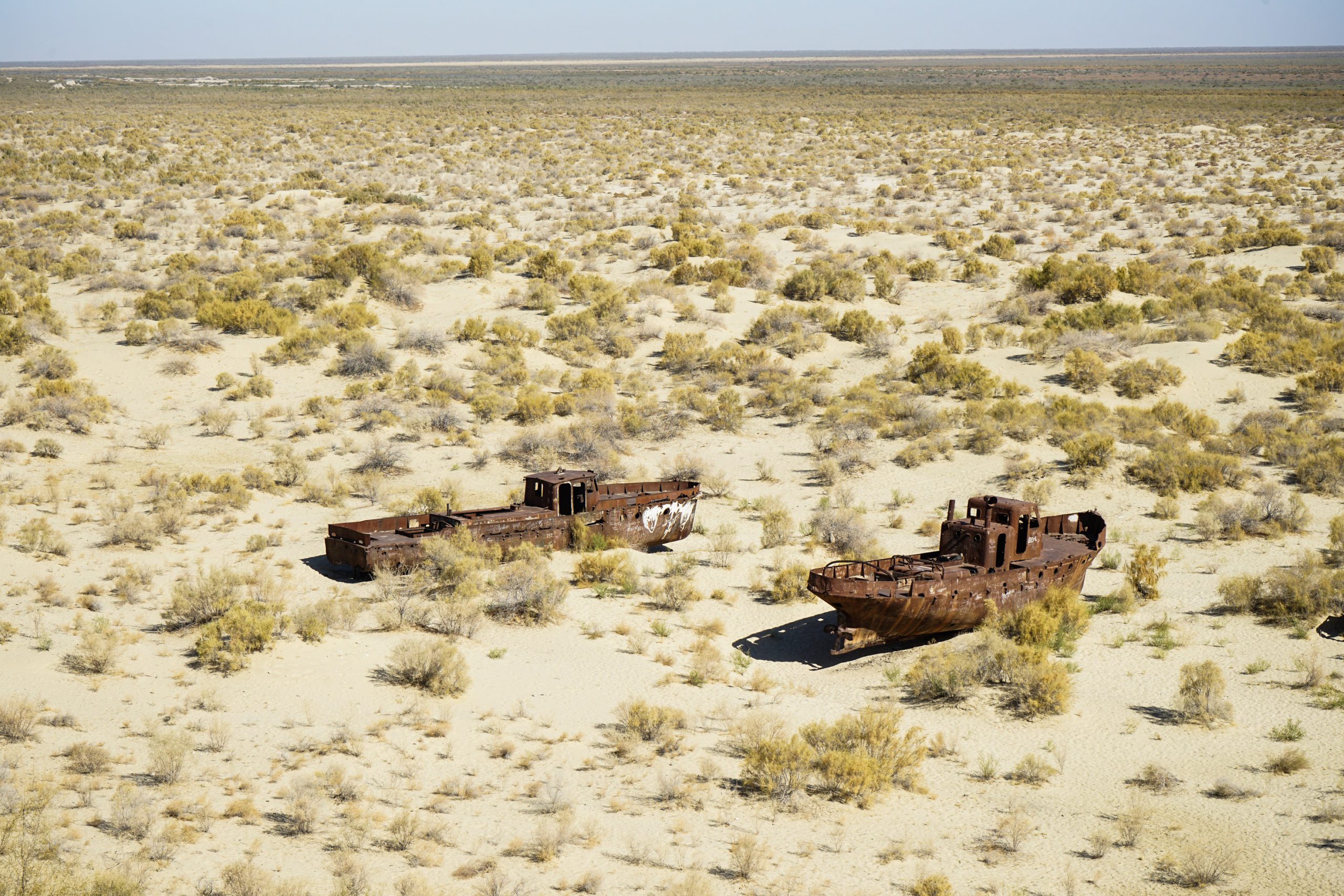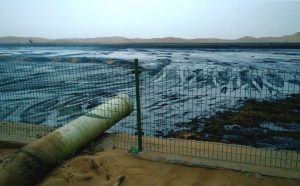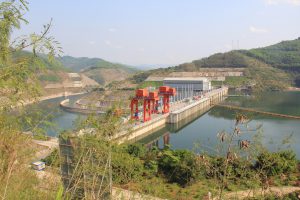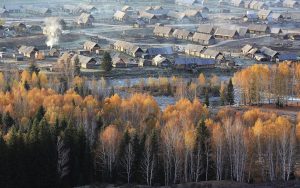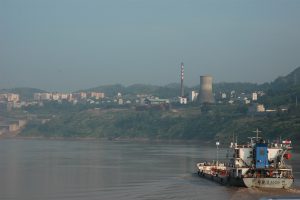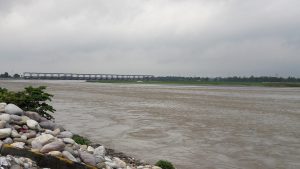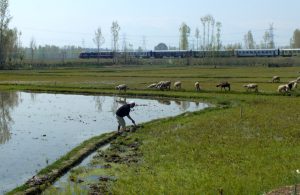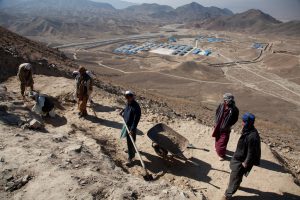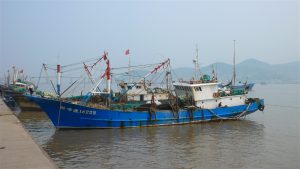The bulk of Karakalpakstan, an autonomous republic in western Uzbekistan, is deserted, the landscape marked only by a few scattered settlements. Once the Amu River flowed through here, from the oasis of Khwarezm to the Aral Sea, the world’s fourth largest lake. Now the Amu is no more than a crease on the map, petering in the desert long before reaching the Aral Sea.
The map is a blank from the point the river disappears into the vast expanses of the lake bed. I decided to go and see for myself, what is actually in that blank space.
In Nukus, the capital of Karakalpakstan, I hired a Mitsubishi 4×4 and driver and headed for the Aral Sea. After almost half a day we came off the plateau and descended into undulating hills. The fine sands were scattered with broken shells, the vegetation all withered; the remnants of some ancient age.
The Aral Sea
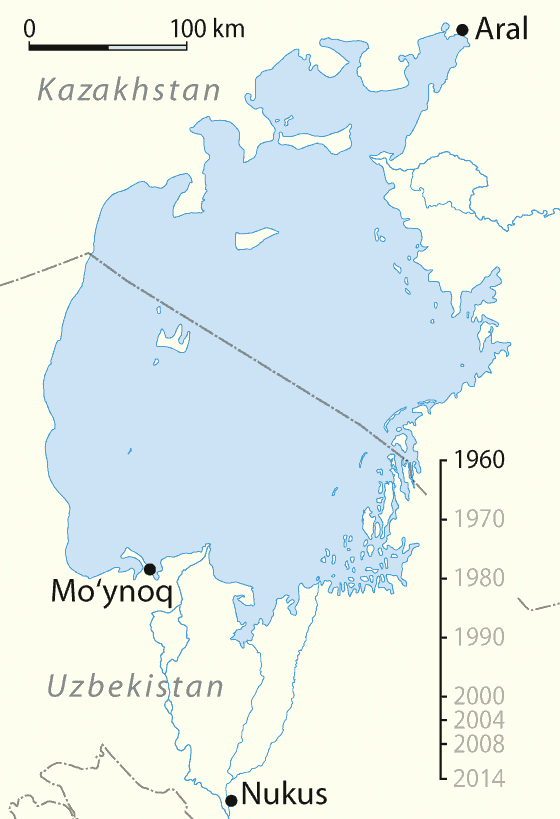 The driver stopped and pointed into the distance. Finally, the Aral Sea was visible, beyond where the hills ended. We were still some way from the lake, but the car could go no further. I got out and continued on foot. It was a bright day, but freezing cold, with the sky a chaos of white clouds. There was a salt tackiness to the breeze playing over my face.
The driver stopped and pointed into the distance. Finally, the Aral Sea was visible, beyond where the hills ended. We were still some way from the lake, but the car could go no further. I got out and continued on foot. It was a bright day, but freezing cold, with the sky a chaos of white clouds. There was a salt tackiness to the breeze playing over my face.
The land retains the appearance of a lake bed. A desolate lunar landscape, desolate to the point of inducing fear. Day-by-day the Aral Sea retreats into itself, by 2012 it contained only a tenth of the water it had in 1960.
Today, the lake is a dark grey, and so calm it seems almost motionless. Any waves seemingly moving in slow motion, the peaks and troughs easily discernible. I could see no further, in the distance the lake was swallowed up by a bank of fog, as if something was being deliberately hidden from me.
Cotton
You can’t tell the story of the loss of the Aral Sea without talking about cotton.
In the 19th century, Russia planted commercial cotton plantations across Central Asia, replacing the traditional food crops of the local farmers. In 1860 Central Asia produced only 7% of Russia’s cotton; by 1915 it produced 70%.
This continued into the days of the Soviet Union. To irrigate expanding cotton plantations Central Asia’s two major rivers – the Amu and the Syr – were diverted. So much water was taken from the rivers for cotton growing that both dried up in the desert sands before reaching the Aral Sea. With no water flowing in, the Aral Sea started to shrink and on current performance will soon disappear entirely.
The Aral Sea will soon disappear entirely
The long-standing planting of a single crop (cotton), along with the use of chemical fertilisers, has left Uzbekistan’s soil depleted. But old habits die hard. Even after independence the country remained one of the world’s major cotton growers. Until 2017 all elementary and middle school students were obliged to volunteer to help plant the crop. In the cotton-picking season trains are packed with female cotton pickers following the harvest. I was there during that harvest and one traveller told me the train he’d purchased a ticket for had been cancelled, so it could serve as a “cotton-pickers’ express.”
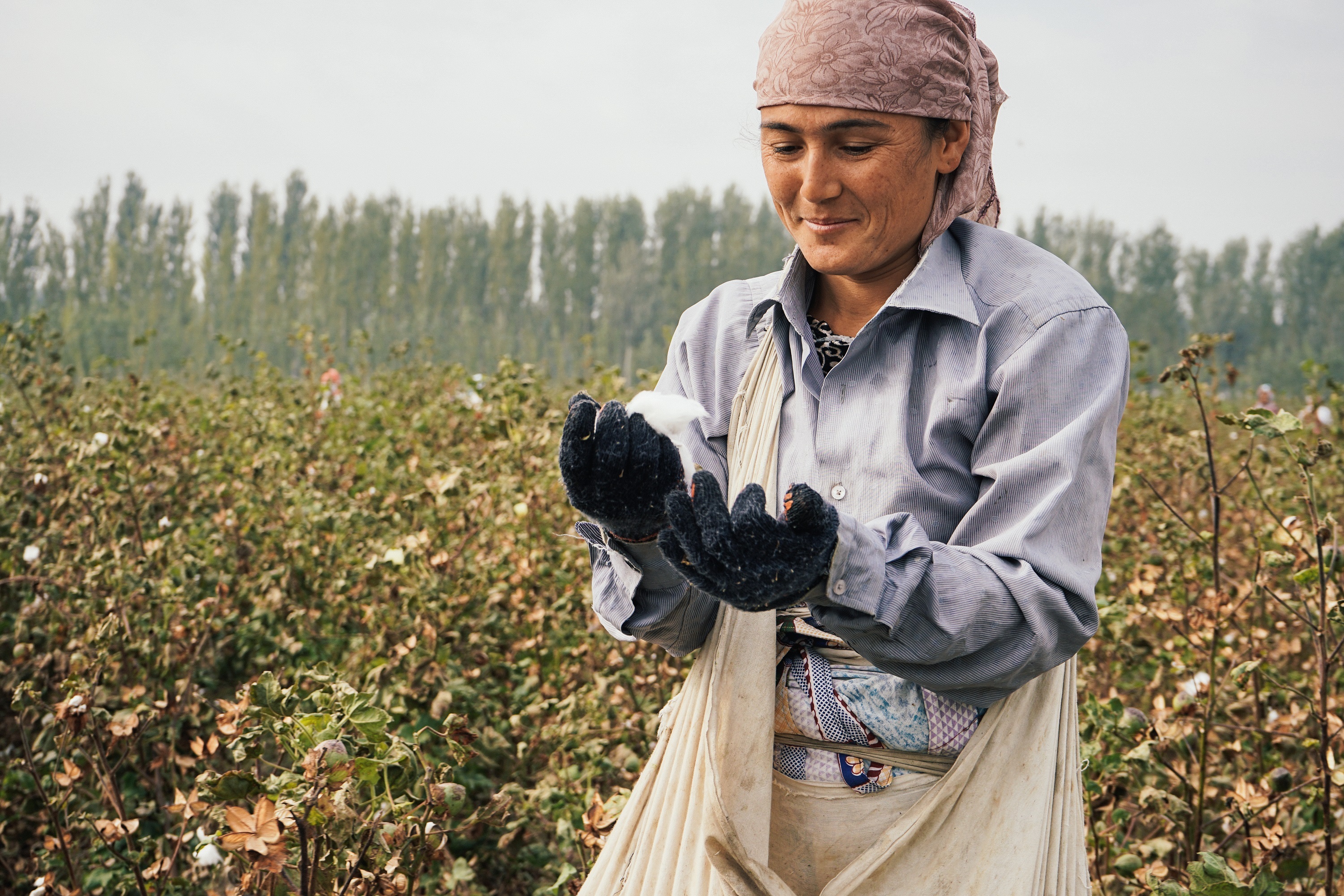
Uzbekistan is a major cotton producer and in the cotton-picking season trains are packed with female cotton pickers following the harvest. (Image: Liu Zichao)
Muynak
I left the Aral Sea and headed for the town of Muynak.
Just decades ago Muynak was the biggest port on the Aral Sea, blessed with both rich fishing grounds and fertile soil. During the Russian famine of 1921 Lenin appealed to Muynak for aid. Within days 21,000 tonnes of tinned fish from the Aral were sent to the Volga River basin, saving tens of thousands of lives.
Fish could no longer survive in the Aral Sea due to the large quantities of salt concentrated in the remaining waters. The ten thousand fishermen of Muynak found themselves out of work. This all happened in a single generation, perhaps the most shocking footnote to this environmental catastrophe.
That former port now lies over 160 kilometres from the waters of the lake. When, after a bone-shaking four-hour journey, we pulled into Muynak I saw only a bleak and impoverished town. Empty patches of yellow earth and barren land lay everywhere, dust blowing up against stone houses, the people wearing the dull expressions borne of long hardship.
There was not a single drop of water at what was once the harbour. The dry lake bed stretched off endlessly, dotted with rusting fishing vessels. I followed steps down for a close look at one, the original paint was still discernible amongst the corrosion. Empty bottles of beer and old newspapers littered the cabin, alongside a torn fishing net.
The boat was surrounded by thick drought-resistant brambles, but of the sea there was no sign. There used to be many more vessels stranded here, now sold off as scrap by out-of-work fishermen. Those remaining are the only evidence this was once a vast lake.
I ran my hand over the boat’s hull. The texture of the steel could still be felt through the rust. The scene left me dumbfounded. The roads from the Fergana Valley to Karakalpakstan had been lined with cotton fields, fields which had nurtured the nation yet placed an unbearable burden on its environment. With the Aral Sea now a desert, the residues of the huge quantities of pesticides used on the cotton fields accumulate in the soil, which under a dry wind blows up as clouds of toxic dust that can be carried throughout Uzbekistan, Kazakhstan and even far off Georgia and Russia.
Rescue
The Soviet Union considered bringing water from Siberia in order to save the Aral Sea. But that was in the final years of the Soviet Union, when such grand plans were no longer affordable. The scheme was officially shelved in 1987.
In 1994 the heads of five Central Asian nations agreed to spend 1% of their national budgets on saving the Aral Sea. But none were willing to further damage already vulnerable economies by cutting cotton production. And anyway, the rescue plan came to nought.
Meanwhile, the shrinking of the Aral Sea was accelerating. In 1987 it split into northern and southern sections. In 2003 that southern section again split into two parts, east and west.
An interpretation panel by the harbour showed how the Aral Sea had changed over the course of a century, and I recalled that huge blank space on the map. There was not a soul to be seen here, just abandoned homes. Most have already left, and very few remain.
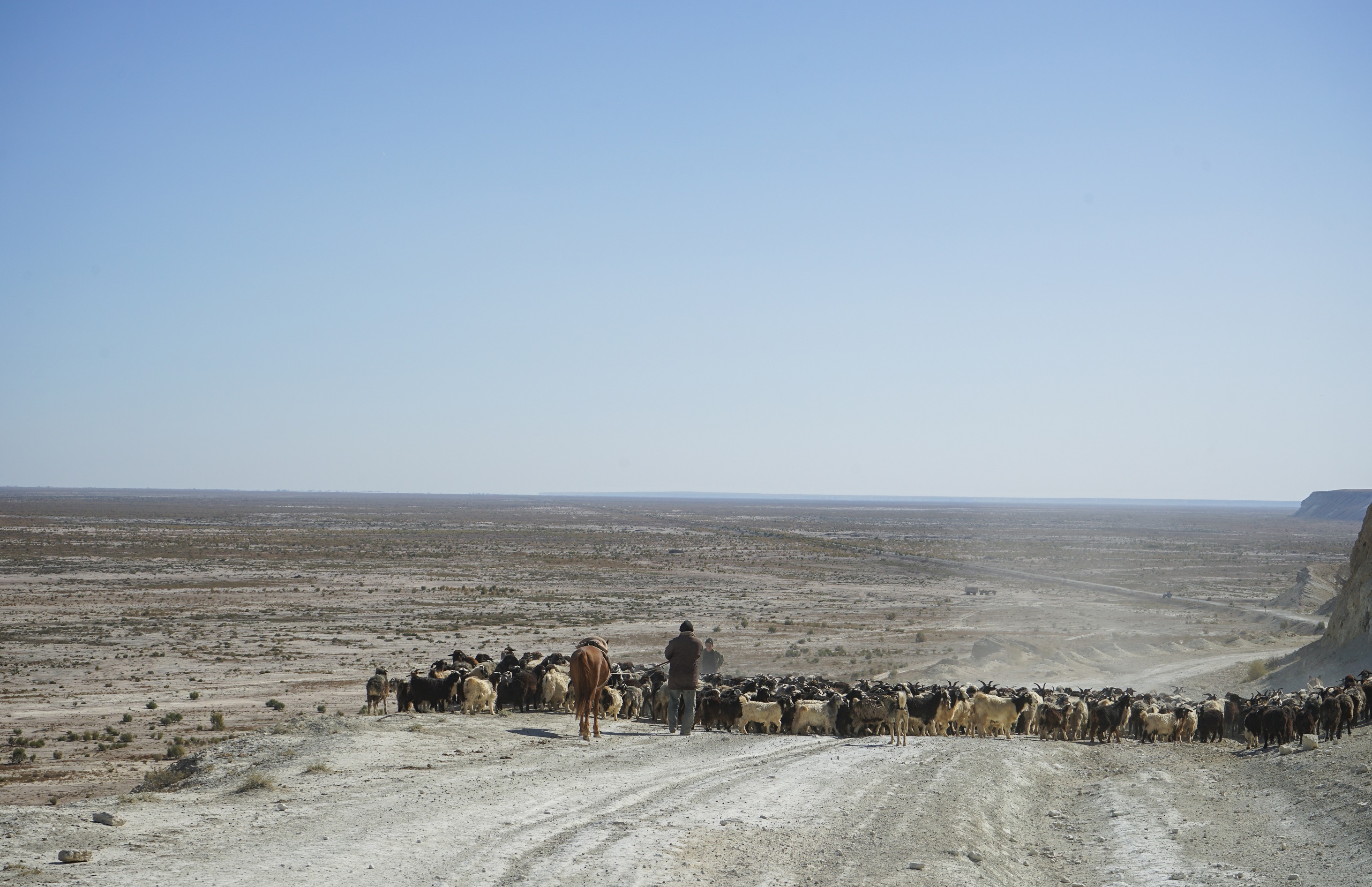
The last goats we saw on our way to the Aral Sea. (Image: Liu Zichao)
Leaving
My driver told me he’d previously been a fisherman here in Muynak. Over a decade ago he had reluctantly sold off his fishing boat and possessions and started afresh in Nukus, where he became a driver. Over the course of his life, he said, he’d lived through two transformations: the break-up of the Soviet Union, which was a change of nation and identity; and the loss of the Aral Sea, an end to a way of life that had persisted for generations.
At lunchtime we ate at the house of his former neighbour. Our host, a woman wearing a headscarf, backed silently out of the room after bringing our food. Her husband had already moved away, gone to work in another city.
After lunch we moved to the courtyard to enjoy the best of the autumn light. Siberian geese flew in formation overhead, heading south for winter. We watched in silence, imagining their journey. Then, simultaneously, we pulled out our phones to take photographs of the sky.
It was a rare thing, to see such life in this place.
